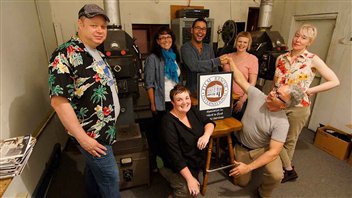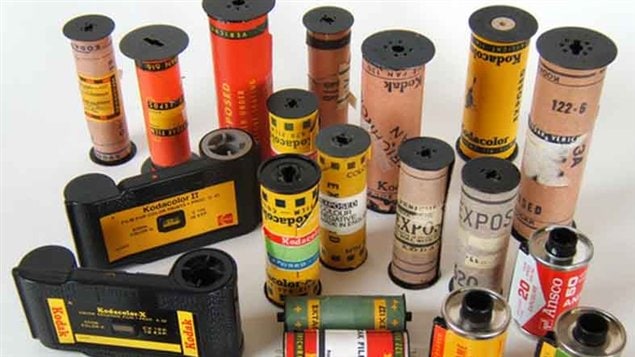Indian Head Saskatchewan is a tiny town about 70 kilometres east of the capital Regina. Located in the town of about 1800 souls, is a unique business with connections around the world, called Film Rescue International.
If you find a roll of old undeveloped movie or still camera film, there’s almost nowhere now where you can get it developed.
That’s where this small business comes in. Their motto is “revealers of lost and found treasures”
Greg Miller, who says “we essentially reveal time capsules” is the founder and owner.
Listen
Greg Miller was fascinated with film from an early age with a Rollei SL35 camera, and was working in a darkroom when he was just 10.
Much later, working in Canada’s largest city, Toronto, he was developing motion picture film when the process for still camera film changed in the mid-70’s
Because the process for motion picture developing and older still film was similar, people began asking him to process their older photo film. Eventually it morphed into a completely new business.
Because most of the business was mailed in, it could be done from anywhere so a move far away from the expense and rush of the big city was in order.
Operating now out of the former bank building in Indian Head, Film Rescue Interantional also has offices in North Dakota in the US, and in the Netherlands.

Its now one of only a mere handful of operations in the world , and one of perhaps only two on this scale, to be able to develop vintage still and move films.
Miller says they have had some interesting clients, with intriguing subjects including a roll processing a roll of film, shot by Ladybird Johnson on the campaign trail of her husband, Lyndon B. Johnson Presidential Library in Texas; other films have been for the estates of Beatle George Harrison, and Sammy Davis Junior.
With years of experience working with films of all varieties, there’s a data bank of information about which chemicals and processes work best for any of some 500 film types.
In spite of Paul Simon’s hit tune called “kodachrome”, that’s one format that’s hit a wall, at least for the colour. “The last batch of colour processing was in 2010 in Kansas, and I went down there to be there for that historic moment” says Miller. The chemicals and special films just don’t exist. However he says, they can still process Kodachrome into black and white photos.

Films also range from photos from vacations in Russia, to darker moments like movie shot from a helicopter firing on a village in Vietnam.
They’ve also managed to deal with films that are mouldy, dropped in orange juice, motor oil, and lots of flood damage.
A film shot on D-Day in France came in stinking and wrinkled. He says it had to be scanned wet, because he says when it dried it would just crumble into nothing.
The company also often gets calls back from customers who are amazed any image could be recovered.
Depending on age and condition of the original film the results can sometimes come out grainy or mottled, but are often still highly prized by the owner.. Miller says, “They can still be important pictures even if their not in perfect condition







For reasons beyond our control, and for an undetermined period of time, our comment section is now closed. However, our social networks remain open to your contributions.